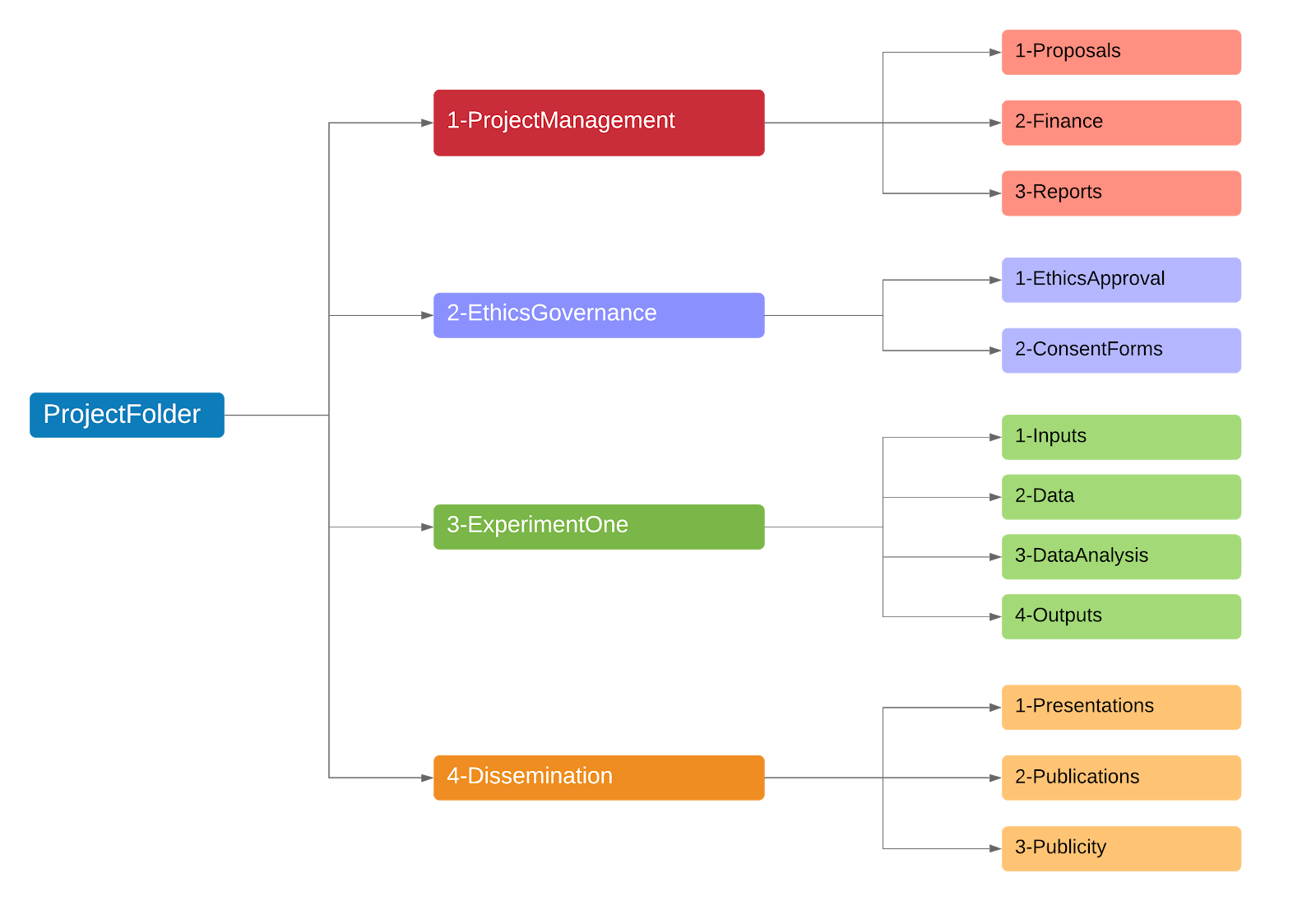Putting your files into folders and naming them effectively can prevent many future problems with accessing your data. Setting up how you will organise and name your data can make you a more efficient researcher and your research more reproducible. Will a future you be able to find the file you save today?
Organising Folders
We suggest that you use folders - grouping files within them so information on a particular topic is located in one place. Consider using one folder for one project.
- Name folders appropriately - name folders after the areas of work to which they relate and not after individual researchers or students. This avoids confusion.
- Be consistent – when developing a naming scheme for your folders it is important that once you have decided on a method, you stick to it. If you can, try to agree on a naming scheme from the outset of your research project (especially if working with others).
- Structure folders hierarchically - start with a limited number of folders for the broader topics, and then create more specific folders within these
- Use folders to separate stages/aspects of research:
- Ongoing vs completed | Code vs data | Raw data vs derived data | Different types of output
- Review files - assess materials regularly or at the end of a project to ensure files are not kept needlessly.
- Do NOT use spaces in your folder names.
- Make a little readme file and keep updating it so that it documents the contents of the folder. This could be a metadata spreadsheet.
Source: Nikola Vuković
Naming Files
It is good to create filenames that are informative to both humans and machines. Managing to do both makes it easier for humans to understand what is in the file and for machines to work with them.
- The computer arranges files by name, character by character. Therefore, put the most important information first. Consider some options for what to include your file name:
- Date/Date range
- Study title/Project name
- Location of data collection
- Version number
- Contents of the file
- Name/Initials of researchers
- A good format for date designations is YYYY-MM-DD (see: The Problem with Dates: Applying ISO 8601 to Research Data Management ).
- When using a sequential numbering system, use leading zeros to make sure files sort in sequential order, i.e. use "001, 002, ...010" instead of "1, 2, ...10”
- Use versioning to indicate the current version, e.g. filename_v02.xxx becomes filename_v03.xxx
- Do not make file names too long (no more than 25 characters).
- Avoid special characters, such as: ~ ! @ # $ % ^ & * ( ) ` ; : < > ? . , [ ] { } ' " |
- Do not use spaces, as some software will not recognise file names with spaces.
- Decide on conventions for if and when to use punctuation symbols, capitals, hyphens, and spaces.
- Use unique names - do not give the same file name in different folders.
- Dashes connect, underscores separate. Use “-” to separate words describing the same logical item, and “_” to separate unrelated logical items from one another.
It is important that you decide what formats to choose for your research data from the beginning, when you start planning your project. These decisions will determine how your data may be used, analysed, stored, and reused in the future. Visit here for some ideal and preferred file format types to consider using.
References | Readings:
- Harvard Biomedical Data Management. Harvard Biomedical Data Management Best practices & support services for research data lifecycles, File Naming Conventions
- National University of Singapore. Research Data Management, File Organisation
- University of Cambridge. Data Management Guide, Organizing your Data
- Open Science Framework. File naming
- Open Science Framework. Organizing Files
- Nikola Vukovic. Setting up an Organised Folder Structure for Research Projects
- University of Purdue Libraries. Library Guides, Data Management for Undergraduate Researchers, File Naming Conventions
- University of Leicester. Research Data Services, Naming files and folders
- Oregon State University. Web Technology Training, What are good file naming conventions?
- University of Hertfordshire. Higher Education Corporation, Corporate Governance, University Policies and Regulations (UPRs), Standard Naming Conventions for Electronic Files, Folders and Records
